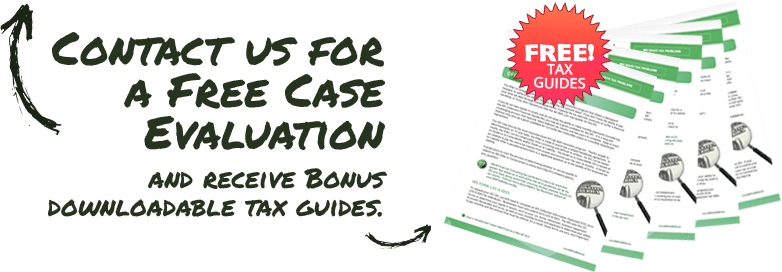Sending Voluntary Payments to the IRS
Any payment to the IRS when you owe a back-tax liability is a great idea, right? Wrong! It may make some sense when you first think about paying back a monetary debt, but in the case of a back-taxes, it could make your situation worse. Depending on your specific set of circumstances, sending a payment to the IRS without advising the Service where to apply it could do more harm than good.
Make Your Voluntary Payment to the IRS Count!
Regarding how the IRS will treat you while collecting the tax, it may have no benefit. You might think to yourself “if I pay them $10,000 today, I’ll get a better deal on the $90,000 that’s still owed”. Not true in most cases. You’ll be treated the same way by the IRS whether you make that payment or not.
There are certain dollar thresholds in IRS tax resolution. It could benefit you to make a Voluntary Payment to get your assessed liability under a certain amount to qualify for a specific resolution. Even in this case you’re better off telling the IRS where/how to apply your payment.
For instance, a $10,000 payment toward the Trust Fund portion of a payroll tax debt is far more valuable to the business owner than a $10,000 payment toward penalty and interest, but both will reduce the total tax debt by the same amount.
Pay Your Current Taxes First, Then Pay Your Back Taxes!
We tell all our new clients to check with us first before sending any good faith, Voluntary Payments to the IRS. Although it is a great gesture, we want to investigate our clients’ cases before blindly sending money to the IRS. For every delinquent taxpayer, the priority is to gain tax compliance. A major part of compliance is paying your current tax obligations on time and in full. For an Individual taxpayer that means making timely Estimated, 1040ES tax payments. For a Business taxpayer with employees, it means making timely employment tax deposits. Making a payment toward the back taxes before paying your current tax is a big blunder. The IRS will not consider any resolution other than a lump sum, full payment without current tax compliance.
A Payment Is Not Just a Payment to the IRS!
Let’s say that you are staying on top of your current tax responsibilities. Sending a blind Voluntary Payment to the IRS is still the wrong thing to do. If you don’t tell the IRS where to apply your Voluntary Payment, it will be applied in the best interest of the government, not the best interest of you or your business. If your business owes employment tax, you want Voluntary Payments to be applied toward the Trust Fund portion of the debt, which can be assessed to you, the business owner, personally. If you owe multiple years, you will likely be better off applying your Voluntary Payment toward the most recent tax year or period owed, due to the IRS Collection Statute Expiration Date. Maybe you also owe the State taxes and your payment would be more beneficial to you or your business there.
The point here is that all tax payments are not equal. M&M can help you determine how to make your payments toward your tax debt to benefit you the most. Contact us before sending your Voluntary Payment to the IRS.








